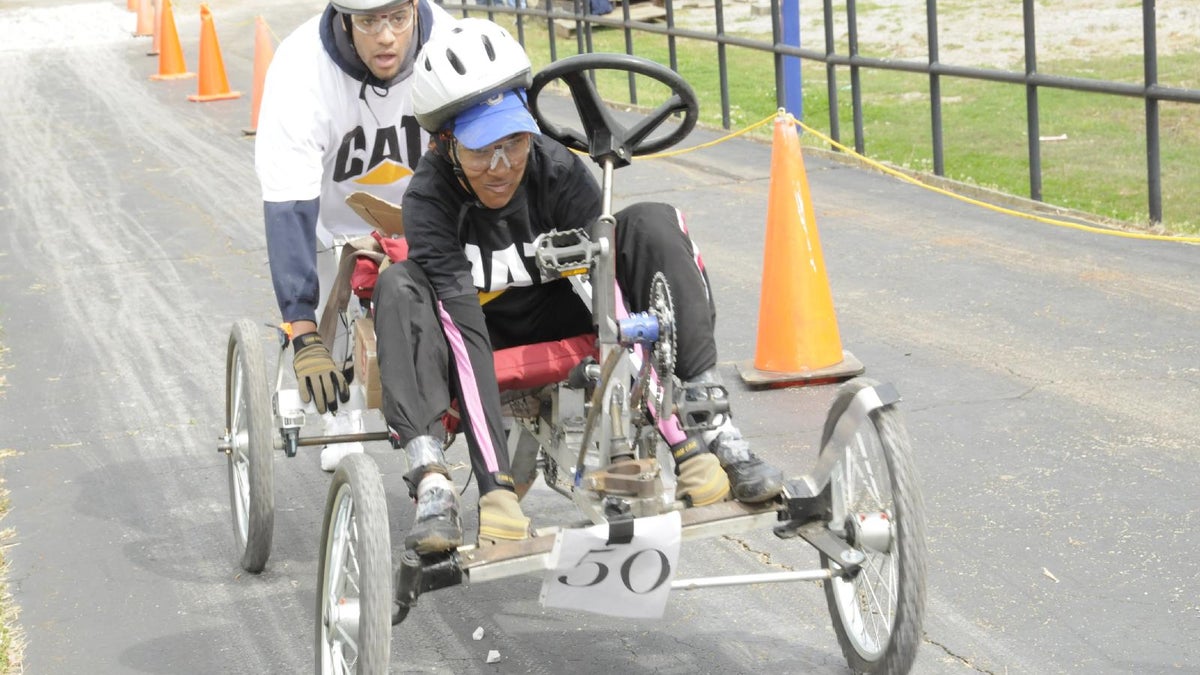Photos: NASA's moonbuggy stakes
The annual Great Moonbuggy Race is a kind of soapbox derby for lunar-minded engineers. Completing the competition, however, is no walk in the park.

It's been a long hiatus since the last time a human strode across the lunar terrain, and we're still some years out from the next planned mission to the moon.
But that doesn't mean we shouldn't tinker around with notions of how astronauts in the not-too-distant future might get around the Sea of Tranquility or some other lunar destination. That's part of the driving force behind NASA's Great Moonbuggy Race, an annual event geared toward college and high school students.
The mission: design and build a lightweight, human-powered buggy, then race it around a half-mile track pocked with gravel pits and bedeviled with other pseudo-lunar obstacles. While the race is designed to be forward-looking and to build on youthful dreams of the future, it also hearkens back to design challenges faced by Apollo-era engineers in the 1960s and 1970s.
Of 68 teams in this year's moonbuggy event, just 39 completed the race. Top honors went to the Rochester Institute of Technology in the college division, and--in a two-way tie--to teams from the Huntsville (Alabama) Center for Technology and Erie (Kansas) High School in the high school division.
Check out our slideshow for more details and a look at 15 or so of the vehicles.

